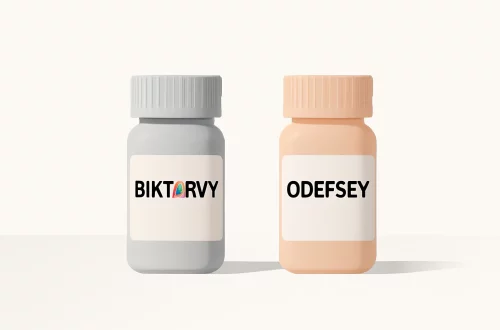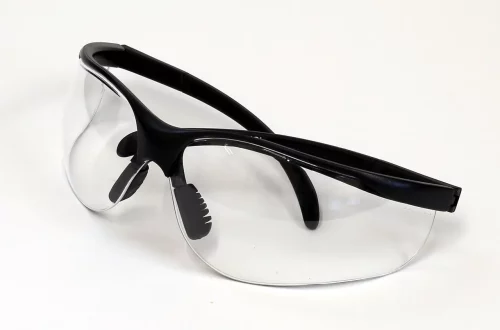
Innovative Medical Devices for Managing Postural Orthostatic Tachycardia Syndrome
Postural Orthostatic Tachycardia Syndrome (POTS) is a complex condition characterized by an abnormal increase in heart rate upon standing, often accompanied by a range of symptoms including dizziness, fatigue, and palpitations. This syndrome can significantly impact the quality of life for those affected, making daily activities challenging and sometimes debilitating. As awareness of POTS grows, so does the need for innovative solutions to manage its symptoms effectively.
Medical technology is evolving rapidly, providing new avenues for patients to gain relief and improve their overall well-being. From wearable devices that monitor vital signs to advanced therapeutic options, innovation in this field offers hope for individuals struggling with POTS. These devices are designed not only to alleviate symptoms but also to enhance the understanding of the syndrome through data collection and patient feedback.
In the quest for better management strategies, collaboration between healthcare professionals, engineers, and technology experts is crucial. This multidisciplinary approach ensures that patient needs are central to the development of new tools and technologies. As we delve into the innovative medical devices available for managing POTS, we will explore their functionalities, benefits, and the future they represent for individuals facing this challenging condition.
Wearable Health Monitors
Wearable health monitors are at the forefront of technology designed to assist individuals with Postural Orthostatic Tachycardia Syndrome. These devices, which can be worn as wristbands or integrated into clothing, track vital signs such as heart rate, blood pressure, and activity levels throughout the day. By continuously collecting data, these monitors allow users to gain insights into their physiological responses to various activities and positions.
One of the significant advantages of wearable health monitors is their ability to provide real-time feedback. For individuals with POTS, understanding how their body responds to changes in posture is critical. These devices can alert users when their heart rate spikes or when their blood pressure drops, empowering them to take proactive steps—such as resting or adjusting their position—to mitigate symptoms. This real-time monitoring fosters a greater sense of control over their condition, transforming how patients interact with their health.
Moreover, many wearable devices come equipped with mobile applications that allow users to log symptoms, medication intake, and lifestyle factors. This comprehensive tracking can help identify patterns and triggers, providing valuable information for healthcare providers. By sharing this data with medical professionals, patients can engage in more informed discussions about their treatment plans, leading to personalized strategies that address their unique needs.
Another key aspect of wearable health monitors is their potential for enhancing communication between patients and healthcare providers. Some advanced devices allow for remote monitoring, enabling physicians to track their patients’ progress without requiring frequent office visits. This capability is particularly beneficial for individuals with POTS, who may find it challenging to travel due to their symptoms. Remote monitoring not only reduces the burden of in-person appointments but also helps ensure that patients receive timely interventions when necessary.
In summary, wearable health monitors represent a significant innovation in managing POTS. By offering real-time insights, facilitating data sharing, and enhancing communication with healthcare professionals, these devices empower patients to take charge of their health journey. As technology continues to advance, we can expect even more sophisticated solutions to emerge, further improving quality of life for those affected by this syndrome.
Smart Compression Garments
Smart compression garments are another innovative approach to managing Postural Orthostatic Tachycardia Syndrome. These specially designed clothing items apply graduated compression to the lower extremities, helping to improve blood circulation and prevent blood pooling in the legs. For individuals with POTS, effective circulation is crucial, as it can alleviate symptoms such as dizziness and fatigue when changing positions.
The technology behind smart compression garments has evolved significantly in recent years. Many of these garments are equipped with sensors that monitor various physiological parameters, including heart rate and blood flow. This data can be transmitted to a companion app, allowing users to track their symptoms in relation to their activity levels and compression use. By understanding how compression affects their condition, patients can make informed decisions about when and how long to wear these garments for optimal benefit.
One of the primary benefits of smart compression garments is their versatility. They can be designed for various activities, from daily wear to athletic performance, ensuring that patients can integrate them into their lifestyle seamlessly. For instance, some garments are designed specifically for exercise, providing support during physical activity while also monitoring heart rate and exertion levels. This integration of function and technology not only offers symptom relief but also encourages a more active lifestyle, which is essential for overall health and well-being.
Furthermore, the comfort and style of smart compression garments have improved, making them more appealing to patients. Innovations in fabric technology have led to the creation of breathable, moisture-wicking materials that enhance comfort, allowing individuals to wear them for extended periods without discomfort. As a result, patients are more likely to adhere to wearing these garments consistently, maximizing their effectiveness.
In conclusion, smart compression garments represent a promising advancement in the management of POTS. By combining the principles of compression therapy with modern technology, these garments offer a practical solution to help individuals cope with the challenges of this syndrome. As they continue to evolve, smart compression garments have the potential to play a crucial role in improving quality of life for those affected by POTS.
Mobile Apps for Symptom Tracking and Management
Mobile applications designed for symptom tracking and management have emerged as valuable tools for individuals with Postural Orthostatic Tachycardia Syndrome. These apps allow patients to log their symptoms, monitor triggers, and track treatment adherence, all of which are essential for effective disease management.
One of the primary functions of these apps is to help users identify patterns in their symptoms. By recording daily experiences, patients can discern what factors contribute to symptom exacerbation. For instance, they may notice that certain activities, dietary choices, or stress levels correlate with increased heart rate or fatigue. This information can be instrumental in developing personalized management strategies, enabling individuals to make lifestyle adjustments that align with their needs.
In addition to tracking symptoms, many mobile apps offer educational resources about POTS. These resources can empower patients by providing them with essential knowledge about their condition, treatment options, and self-management techniques. Understanding the underlying mechanisms of POTS can help patients feel more in control and engaged in their care. Furthermore, some apps include forums or community features that allow users to connect with others facing similar challenges. This sense of community can provide emotional support and valuable insights, enhancing the overall management experience.
Moreover, mobile applications can facilitate communication between patients and healthcare providers. Many apps allow users to share their symptom data with their doctors, fostering informed discussions about treatment plans and adjustments. This collaboration can lead to more tailored and effective interventions, ultimately improving patient outcomes. Additionally, the ability to track medication adherence through these apps can help ensure that individuals stay on course with their prescribed regimens.
As technology continues to advance, we can expect mobile apps for POTS management to become even more sophisticated. Features such as artificial intelligence may be integrated to analyze data patterns and provide personalized recommendations, further enhancing their utility.
In summary, mobile apps for symptom tracking and management are transforming the way individuals with POTS approach their condition. By empowering patients with knowledge and tools to monitor their health, these applications play a crucial role in improving the overall management of Postural Orthostatic Tachycardia Syndrome.
**Disclaimer:** This article is for informational purposes only and does not constitute medical advice. Always consult with a healthcare professional regarding any health concerns or conditions.




